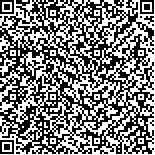徐创,张鹤扬,刘陪沛,等.超短波对创伤性脑损伤小鼠损伤修复和小胶质细胞活化的影响[J].中华物理医学与康复杂志,2024,46(4):295-301
扫码阅读全文

|
| 超短波对创伤性脑损伤小鼠损伤修复和小胶质细胞活化的影响 |
|
| |
| DOI:10.3760/cma.j.issn.0254-1424.2024.04.002 |
| 中文关键词: 超短波 创伤性脑损伤 损伤修复 神经炎症 小胶质细胞 |
| 英文关键词: Ultrashort wave therapy Traumatic brain injury Brain injury Damage repair Neuroinflammation Microglia |
| 基金项目:国家自然科学基金面上项目(31971285),后勤科研项目(145BHQ090003000X09) |
|
| 摘要点击次数: 3278 |
| 全文下载次数: 3610 |
| 中文摘要: |
| 目的 探究超短波对创伤性脑损伤小鼠损伤修复和小胶质细胞活化的影响。 方法 选取清洁级8周龄的雄性C57BL/6小鼠90只,采用随机数字表法将90只小鼠分为假手术组、脑损伤组和超短波组,每组30只小鼠,在此基础上,再将3组小鼠随机分为2个亚组,每个亚组15只小鼠,分别进行行为学检测和组织与分子学检测。脑损伤组和超短波组使用经典的控制性皮质冲击(CCI)法构建小鼠创伤性脑损伤模型,假手术组只进行麻醉和颅骨切除术,不撞击脑组织。造模成功24 h后,对超短波组进行超短波治疗,每日1次,连续干预7 d。3组小鼠的行为学检测包括,于造模成功后第3~5天进行平衡木实验,于造模成功后第6~8天进行疲劳转棒实验,于造模成功后第5天对3组小鼠进行Y迷宫实验,于造模成功后第9天进行旷场实验。于造模成功后第7天对3组小鼠取材,然后采用免疫荧光实验观察3组小鼠损伤灶海马组织微管结合蛋白2(MAP2)和离子钙结合适配器分子1(IBA1)的表达,采用实时荧光定量聚合酶链式反应(qRT-PCR)检测3组小鼠损伤灶周围组织的促炎因子水平和小胶质细胞活化标记物水平。 结果 造模成功后第4天,脑损伤组穿越平衡木的时间为(11.81±3.47)s,显著长于假手术组(P<0.05)。造模成功后第5天,脑损伤组穿越平衡木的时间显著长于假手术组和超短波组(P<0.05)。造模后第8天,脑损伤组疲劳转棒实验的在棒时间显著低于假手术组和超短波组(P<0.05)。造模成功后第5天,脑损伤组Y迷宫实验的新区探索时间和距离均显著低于假手术组和超短波组(P<0.05)。造模成功后第9天,脑损伤组旷场实验的中心区域探索时间和距离均显著低于假手术组和超短波组(P<0.05)。脑损伤组小鼠损伤区脑组织的BDNF相对mRNA水平显著低于假手术组和超短波组,差异均有统计学意义(P<0.05),脑损伤组损伤灶海马组织MAP2的阳性细胞平均荧光强度值亦显著低于假手术组和超短波组(P<0.05)。脑损伤组的TNF-α、IL-1β、IL-6 mRNA水平均显著高于假手术组和超短波组,差异均有统计学意义(P<0.05)。脑损伤组损伤灶海马组织IBA1阳性细胞的平均荧光强度值显著高于假手术组和超短波组,差异均有统计学意义(P<0.05);且脑损伤组小鼠损伤灶周围组织Cx3cr1、CD68 mRNA水平均显著高于假手术组和超短波组,差异均有统计学意义(P<0.05)。 结论 超短波刺激可能通过促进神经元损伤的修复,抑制小胶质细胞活化,以及降低其促炎因子的水平来改善创伤性脑损伤小鼠的运动功能、空间识别记忆能力和焦虑情绪。 |
| 英文摘要: |
| Objective To explore the effect of ultrashort wave therapy on injury repair and the activation of microglia after a traumatic brain injury. Methods Ninety 8-week-old male C57BL/6 mice were divided into a sham operation group, a brain injury group and an ultrashort wave group, each of 30. Each group was then further divided into 2 subgroups of 15. A model of traumatic brain injury was induced in both the brain injury and ultrashort wave groups using controlled cortical impact. The sham operation group underwent anesthesia and craniectomy without the impact on brain tissue. Beginning 24 hours after successful modeling, the ultrashort wave group was treated with ultrashort wave therapy once a day for 7 days. All of the rats performed balance beam experiments, fatigue rotating rod experiments, Y maze experiments and open field experiments on the 3rd to 5th day, 6th to 8th day, 5th day and 9th day after the modeling. On the 7th day samples were collected to observe the expression of microtubule binding protein 2 (MAP2) and IBA1 protein in the hippocampus using immunofluorescence assays. The levels of pro-inflammatory factors and microglia activation markers in the tissues around the lesion were quantified using real-time quantitative fluorescent polymerase chain reactions. Results On the 4th day after the successful modeling the average time needed to cross the balance beam in the brain injury group was significantly longer than the sham operation group′s average. And one day later, the value was significantly longer than those of all the other groups. On the 8th day the average fatigue rotating rod time in the brain injury group was significantly shorter than in the other two groups. The brain injury group′s new area exploration time and distance in the Y maze experiment on the 5th day, as well as its exploration time and distance in the central region in the open field experiment on the 9th day were significantly smaller than those of the other groups. In addition, the relative mRNA level of brain-derived neurotrophic factor in the injury group′s brain tissue and the average fluorescence intensity of MAP2 positive cells were significantly lower than in the other two groups, while the levels of TNF-α, IL-1β and IL-6 mRNA and the average fluorescence intensity of IBA1 positive cells in the hippocampus, as well as the mRNA levels of Cx3cr1 and CD68 in the tissue around the lesions of the brain injury group were significantly higher than in the other groups. Conclusion Ultrashort wave therapy can improve motor function, spatial recognition and memory and relieve anxiety after a traumatic brain injury, at least in mice. It promotes the repair of neuron injury, inhibiting the activation of microglia, and reducing the level of proinflammatory factors. |
|
查看全文
查看/发表评论 下载PDF阅读器 |
| 关闭 |
|
|
|